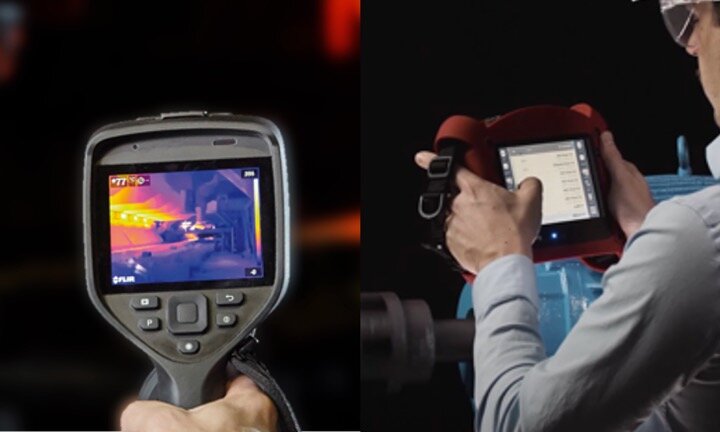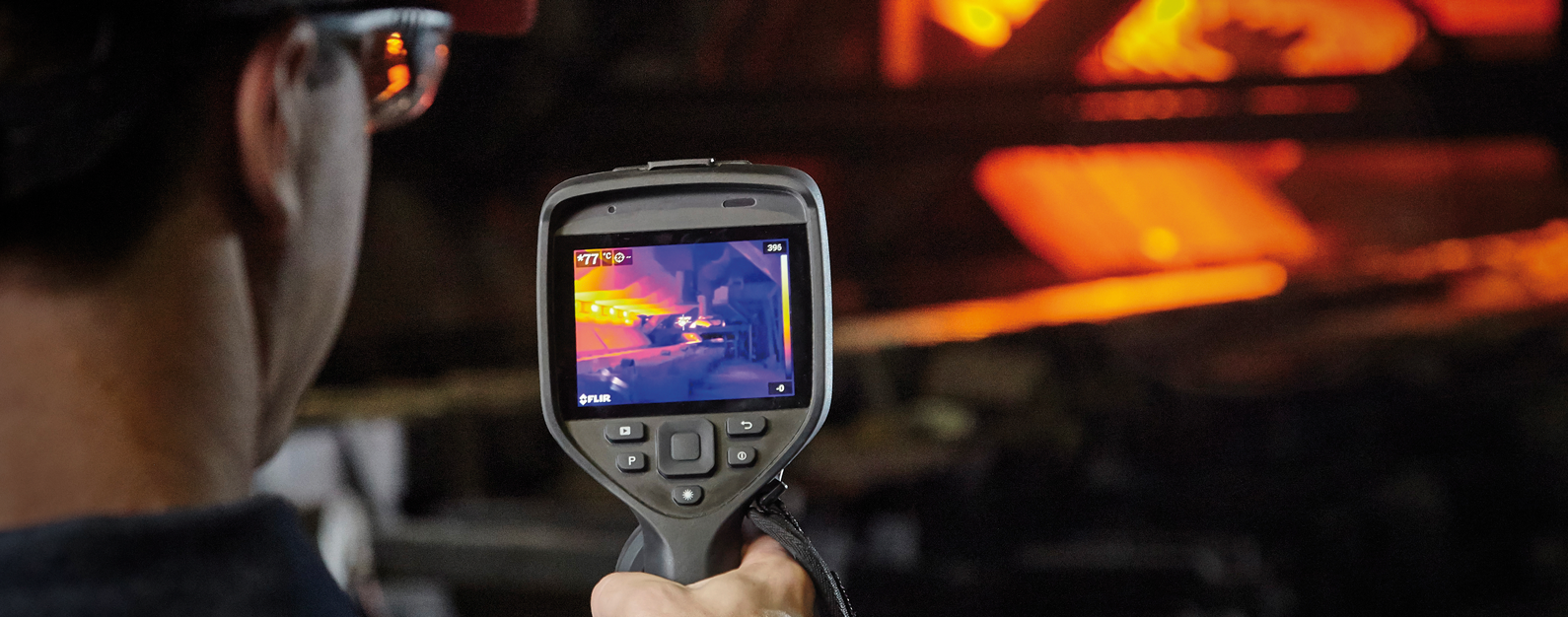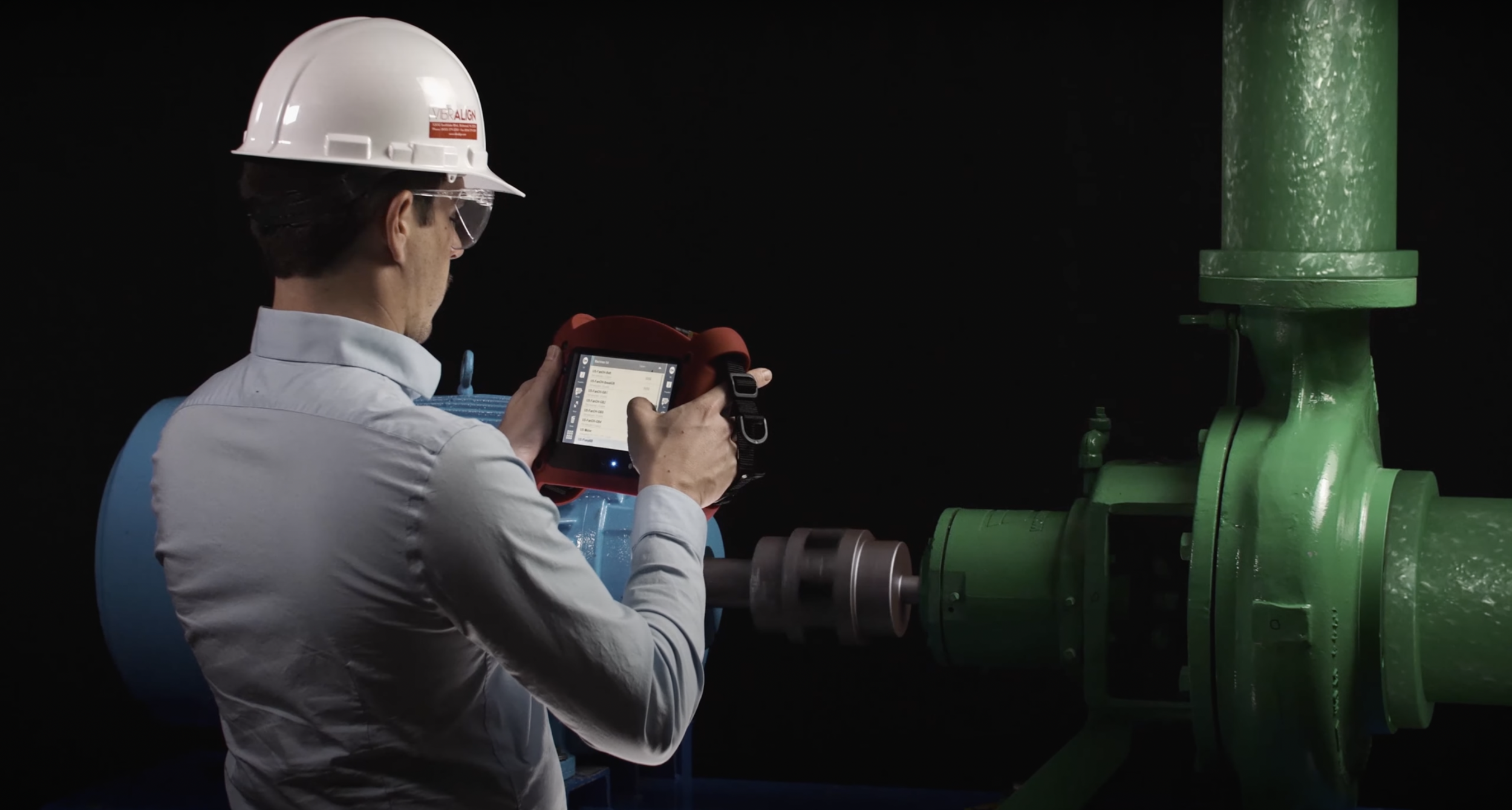Condition Monitoring is the process of monitoring a parameter of condition in machineries such as Vibration and Temperature in order to look for signs that a fault may be developing, Condition Monitoring is a major component of predictive maintenance and is more efficient than reactive maintenance since faults can generally be avoided.
The use of condition monitoring allows maintenance to be scheduled in or other actions to be taken to prevent consequential damages and avoid its consequences, Condition monitoring has a unique benefit in that conditions would reducing machine downtime, saving money and prolonging the life of the machine, to benefit from the real power of condition monitoring it must form part of a company-wide asset management program.
Monitoring is an effective way of avoiding problems in the future. While it is no great hardship when we run out of teabags, it is essential when running machinery to effectively monitor the condition of all machines, either running independently or as part of a chain.
Condition-Based Monitoring is used as part of an overall strategy to keep machines running smoothly at the optimum output and efficiency levels. While a machine may be running correctly at any given time, it is essential to monitor its performance regularly to predict accurately what will happen to its operation.
Machine Condition Monitoring
Machine condition monitoring is a process of checking the status of the machinery during its normal operation. It consists of data acquisition, data processing, and data comparison with trends, baseline, and representative data from similar machines.
Machine Condition monitoring with Oneprod by ACOEM Group
In industry, the condition monitoring of machines is performed by machine doctors called predictive maintenance engineers (PdM's). Their role is to use diagnostic systems to prevent unexpected production downtime and catastrophic failures with minimum production stops and minimum maintenance costs.
What parameters do they check?
There are plenty of parameters that can be checked ranging from visual inspection, oil levels, oil debris, temperatures, corrosion, vibration, pressures, etc.
The development of condition monitoring started long ago with some very simplified measurements. In late 1850 railway maintenance technicians used wheel-tapping hammers to check the state of the wheels on locomotives.
By hitting the wheels and analyzing the sound they were capable of assessing the wheels' state (a wheel with a crack was emitting a dull sound). Progress in electronics and software development are dramatically changing machine condition monitoring making it simpler to use and way more reliable
Condition Monitoring Applications
Condition monitoring applies to thousands of applications, but the best known include:
Industrial plant and facilities of all types: Gearboxes, UPS, AC, electric motors, fans, pumps.
Pulp & Paper: Blowers, conveyor belts, chippers, chip classifiers, refiners, pressure screens, screw conveyors, agitators, nip monitoring, felt rollers, etc.
Iron & Steel: Raw material handling machines, conveyor belts, ship unloaders, galvanization plants, stack reclaimers, continuous casters, cranes, rolling mills, annealing machinery, and also pumps, fans, and gearboxes, etc.
Automotive: Wind Tunnels, Air handling units, and pumps in paint shops as well as presses and transfer presses, etc.
Cement: Crushers, gearboxes, conveyor belts, separators, fans, raw mills, ball mills, elevators, and blowers.
Power generation plants: gas turbines, steam turbines, water pumps, etc.
Condition Monitoring Techniques
Condition monitoring starts with basic inspections. Small changes, like abnormal heat or pressure, strange sounds, excessive vibration, or a different smell, are often signs that something is going haywire. There are several machine condition monitoring techniques that are used for the assessment of machine conditions.
The following list includes the main condition monitoring techniques applied in the industrial and transportation sectors:
1. Temperature Monitoring
It has been adopted for machine health assessment over the last decades. There are several methods of temperature monitoring that range from passive, non-contact (using IR cameras) to active sensor-based, IR scan can give a good overview of machines or control electronics and indicate overheating problems. Contact measurement is very useful for early detection of lubrication-related problems but not that much in detecting physical damages such as bearing cracks and spalls.
Infrared thermography from Oneproed by ACOEM Group is easy to use and easy to understand, infrared thermography is a monitoring technique complementary to vibration analysis. It can be used to enrich the type of information collected and make better diagnostic on mechanical components, but also help to prevent electrical failures or risk of fire in industrial environments.
2. Vibration Monitoring
It is a very old and the most commonly used method for the assessment of the machine condition. It helps us detect the failure and understand its root cause. Accelerometers are used to monitor changes in amplitude across a wide frequency range. Vibration monitoring permits you to understand phenomena such as misalignment, unbalance, looseness, gear tooth issues, or bearing wear before failure.
FALCON is an innovative tool for vibration measurement and analysis that puts condition-based maintenance within the grasp of all users. The wireless three-axis sensor and real-time processing capabilities literally cut times of vibration measurements: 8 seconds per bearing typical for measuring all X Y and Z directions with the highest quality set of vibration data, comes with a large color touch screen, which can even be used with safety gloves, a rubber grip for better handling and anti-shock resistance.
3. Acoustic Emission
Acoustic emission sensors are recently being used more and more for condition-based monitoring because of many advantages for the early detection of faults. But it is not a suitable method for permanent monitoring installations because of its problem of massive data storage requirements due to its operation in high frequency (a few kHz to MHz) and high prices compared to other available solutions on the market. It is also difficult to pinpoint the source of the sounds that the sensors measure.
4. Ultrasound Testing
It is a very cost-efficient technology used especially to answer the initial question if a machine is healthy or not. Ultrasound detectors normally measure sound pressure waves in the frequency range between 30 kHz to 40 kHz. Pressure waves are measured using a resonant sensor which transforms waves into a small electrical charge. It is normally used hand in hand with vibration monitoring techniques. Technicians normally use ultrasound to filter good machines from bad machines and then perform an in-depth vibration analysis of the bad equipment to find the root cause of the issues.
5. Oil Analysis
It is normally performed in laboratories using chemical tests to determine the state of the oil. Nowadays tribology sensors for permanent oil quality monitoring exist. The results indicate if the oil should be changed. This technology is very rarely used to assess the condition of the asset and is more focused on determining the condition of the lubricant (viscosity, basicity, etc.). However, oil level and quality tracking are very important to prevent costly repairs.
There are dozens of condition monitoring techniques and counting. The efficiencies of mechanical equipment can be increased by using proper Machine Condition Monitoring solutions. The choice of the system depends on the criticality of the asset, cost of replacement/failure, asset access possibilities, cost of monitoring and expected fault progression rate.
Portable, low-cost systems are normally used for non-critical assets with low-replacement costs and slow fault progression rates.
However, big advances in technology lately have enabled permanent monitoring solutions to become very cost-effective. Due to the cost decrease, higher reliability, and work efficiency more and more customers opt for permanent solutions.







